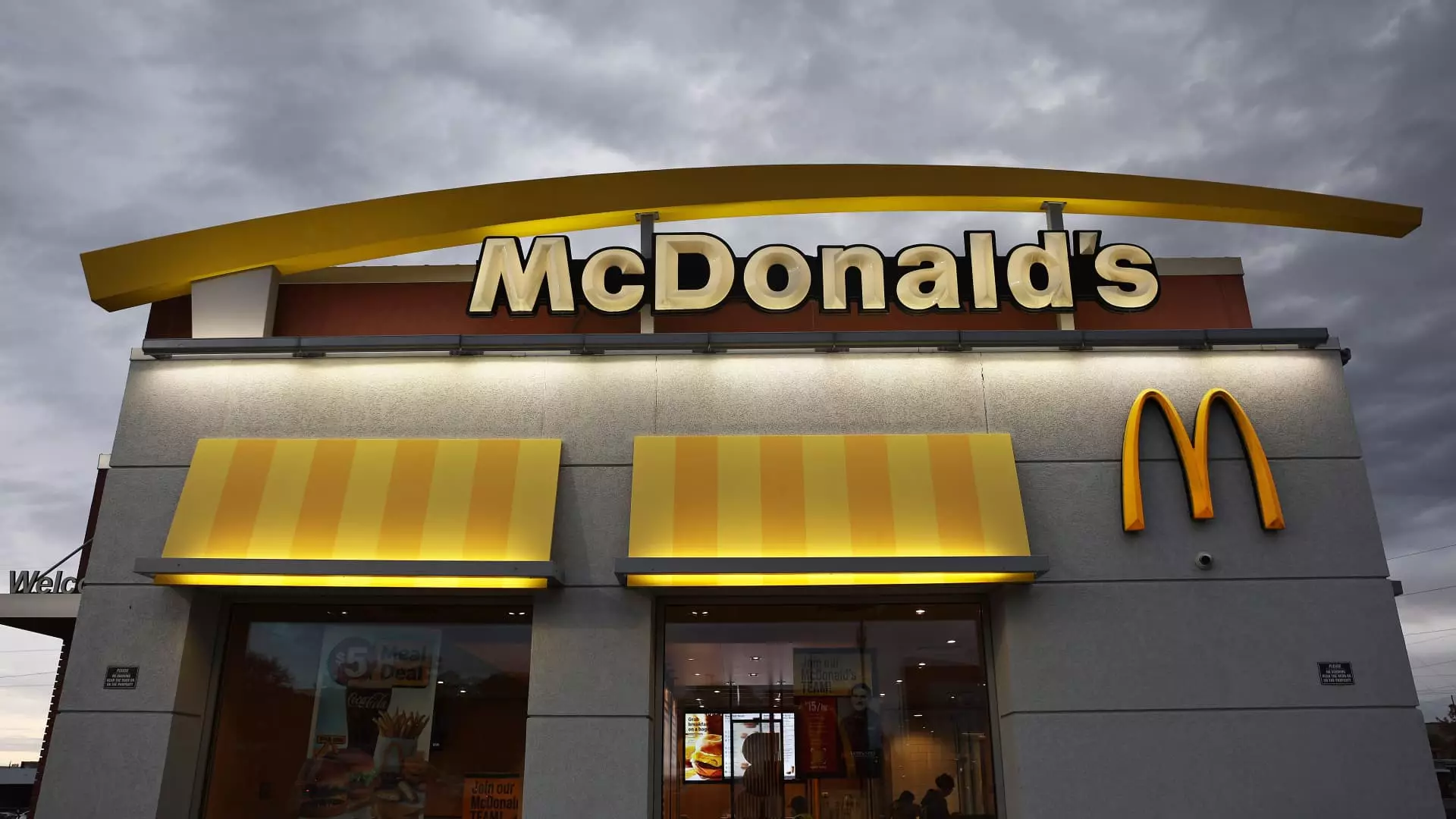The fast-food giant McDonald’s has faced its fair share of challenges recently, notably marked by disappointing quarterly results. As the company navigates the aftermath of a public health scare alongside shifting consumer behaviors, a deep dive into its financial performance reveals a multi-faceted picture of resilience amid adversity.
On Monday, McDonald’s disclosed its quarterly revenue figures, which fell short of analyst expectations. The company reported revenues of $6.39 billion, a slight decline from the anticipated $6.44 billion. Though the earnings per share remained steady at $2.83, indicating that McDonald’s met these specific expectations, the overall revenue underperformance paints a concerning picture for a company that thrives on consistency and growth. Such results often lead to investor apprehension, reflected in the minor dip of less than 1% in premarket trading following the announcement.
Key performance indicators reveal that while McDonald’s same-store sales growth of 0.4% outpaced Wall Street’s predictions of a 1% decline, there were significant regional divergences. The U.S. segment saw a concerning drop of 1.4% in same-store sales, exacerbated by a crisis linked to an E. coli outbreak connected to its popular Quarter Pounder. This starkly contrasts with the expectations of a modest decline of only 0.6%. The outbreak put severe strain on consumer trust, particularly in the states that were directly affected, leading to a notable drop in foot traffic to U.S. locations.
The E. coli situation illustrates how sensitive the fast-food industry can be to health concerns. McDonald’s prompt response to switch suppliers for the implicated onions shows an acute recognition of the need to maintain food safety and customer trust. Despite declaring the outbreak officially over by December, the immediate aftermath caused a significant dip in customer visits, the ramifications of which will likely ripple through subsequent quarters.
In an effort to regain customers, McDonald’s had previously introduced a $5 combo meal, targeting budget-conscious diners. While this strategy bore fruit in the third quarter, the challenge remains of sustaining sales beyond value-oriented offerings. Analysts caution that while promotional items can draw customers in, it is crucial that these customers are encouraged to purchase additional, higher-margin menu items as well.
Furthermore, insights from McDonald’s international operations provide a glimmer of hope; both segments outside of the U.S. reported positive same-store sales growth. The international developmental licensed markets segment demonstrated robust performance with a remarkable 4.1% increase in sales. These figures suggest that while the U.S. market continues to grapple with significant challenges, McDonald’s global presence offers a buffer against broader economic challenges.
McDonald’s recent quarterly performance underscores a pivotal period for the fast-food titan. The combination of public health concerns and fluctuating consumer habits poses notable challenges, yet the underlying strength of the brand and its global operations carries potential for recovery. Moving forward, McDonald’s must balance risk management with innovative marketing strategies to restore confidence among consumers, particularly in the U.S. By addressing these immediate concerns while leveraging international growth opportunities, McDonald’s can work towards a more stable and profitable future. It’s essential for the company to remain vigilant about customer sentiment and food safety to ensure that it not only recovers but also thrives in the competitive fast-food landscape moving ahead.


Leave a Reply